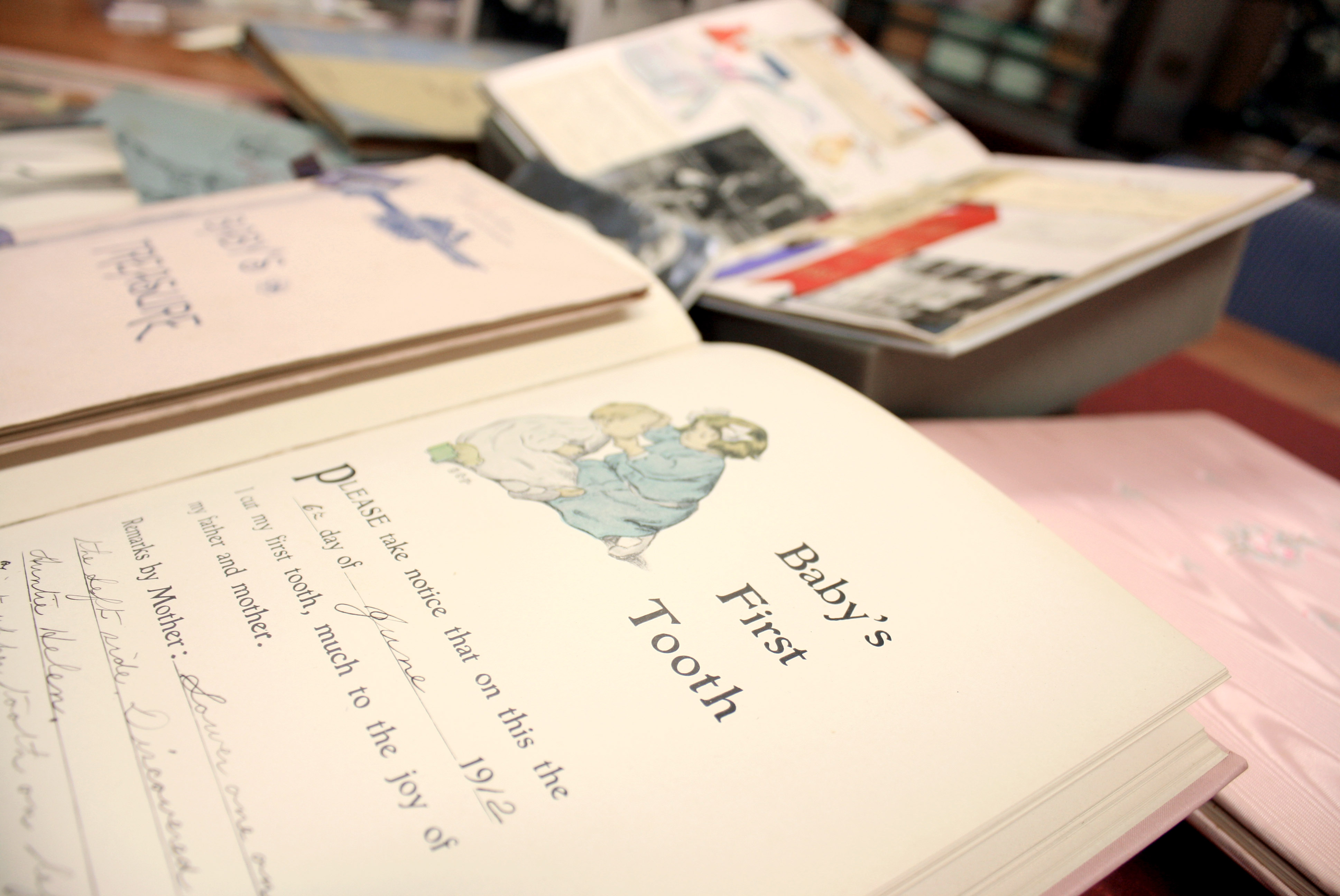Baby books become research resource

The UCLA Biomedical Library’s History and Special Collections stacks houses a large and unique collection of baby books from the United States dating back to 1872.
By Shoshee Jau
Oct. 28, 2010 2:08 a.m.
UCLA’s collection of 1,300 baby books began in 2003 with the arrival of an 1884 account published in London of common diseases among young children.
Titled “The Parents’ Medical Note-book,” the 26-page book encouraged parents to chronicle their children’s ailments for doctors’ use.
More than a century later, the work has revealed valuable insights into the medical, social and cultural atmosphere of the time it covers.
“Baby books are interesting because they are all different and (show) the situations in all different parts of the country and world,” said Howard Rootenberg, president of B&L Rootenberg Rare Books & Manuscripts, whose wife’s donation started off UCLA’s baby book enterprise.
The collection is the only one of its kind in the world. Located in the UCLA Biomedical Library’s History and Special Collections stacks, it includes a range of baby books spanning 138 years, with the earliest dating back to 1872.
Russell Johnson, librarian for the History and Special Collections for the Sciences, has gathered books over the past seven years.
“We’ve kind of staked out a territory, and people are coming to us to use this stuff and donate stuff to us,” Johnson said. “The way that we get these is some were donated, but most we buy through eBay, book dealers or swap meets.”
Although the books were meant to advertise products or document babies’ first words, outfits or excursions, they are now a unique source of information for 21st century researchers, Johnson said.
“When we had a few, they were kind of a curiosity,” he said. “But once you build up a number and start collecting, a researcher can see how the gifts that a baby receives change over 100 years, or what kinds of things were advertised to new parents back around World War I.”
The collection is particularly valuable because of its large scale, and researchers from across the country often frequent it, Johnson said.
“It just keeps growing, and I just have to keep going back,” said Janet Golden, a Rutgers University professor who is writing a medical history of babies under the age of 1.
Golden, who often flies to UCLA to visit the collection, said she discovered much about the changing social norms throughout history while doing her research.
“For wealthy families, the books are beautifully illustrated and show the babies’ first gifts, first tooth, first laugh, first (crawling), first bright sayings,” Golden said. “Some are kept well into adulthood, some are life books. There’s so much information in them, and they are such rich resources.”
Baby books came into existence in the mid-1800s, when hospitals and local merchants began printing books with information pages for parents to fill out about their children, Golden said. The books later took on varying forms, depending on the historical period and a family’s social class.
“There are some other baby books around with lots of family papers and diaries,” Golden said. “There are cards and letters, valentines, family photos. Baby books are kind of like (birdwatchers’) notebooks ““ they tell you what to look for and the places for you to write observations.”
As researchers thumb through the books, they take a journey into the personal lives of people in history, Rootenberg said.
“This type of thing is ephemeral in nature,” he said. “You never know what you will find, with people keeping these scrapbooks for hundreds of years. Then someone thought they would print them out and pass them around for advertising. It’s extremely interesting.”
The collection is currently dominated by U.S. baby books, but may one day expand to include an equal number of books from other countries, Johnson said.
“It gives us a never-ending story,” he said.


